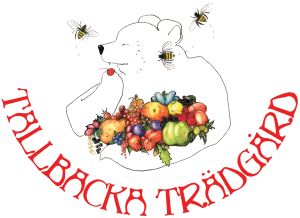

Tallbacka in 2023 - part 2
Salad Mix-promising introduction and an easy adjustment
The salad mix that we developed in 2022 is an excellent product. It varies according to the season, consists of many tasty salad plants, is fabulously beautiful and full of surprises! It was clear, however, that the development work needed to be continued. Some of the varieties did not yield enough, other varieties tested were not durable enough or were plagued by pests and some tasted too strange. But lettuce, leaf lettuce, spinach, garland chrysanthemum and buck’s-horn plantain worked nicely and the variety of lettuce varieties made the mix wonderfully beautiful and colorful.
In the spring we got the strangest growing experiences and surprises when we tried to investigate germination problems in salads. The final cause was never clarified, but the salad seeds germinated poorly. We dismissed the obvious causes: temperature too high, high humidity or drought. We tried different soil mixtures, shop-bought and our own. Maybe the seeds were bad or the moon phase was wrong or something else. The planned selection of varieties and their early introduction went awry and we were could only grow what germinated. After that experience, we can’t boast of our skill at pushing up seedlings. Every healthy plant is a wonder and a joy.
We got a new variety for the salad mix. A fascinating novelty, although only tasting a small bit, were the sour leaves of mountain sorrel. Garden sorrel gives a big and tasty harvest but does not fit into the salad mix as the snails eat holes in it, the shield-leaf sorrel again is beautiful and tasty but hopelessly slow to harvest. Mountain sorrel is very tasty and easier to use. Last year’s small test area will be expanded.
The salad mix needs flavours and character from salad mustards and rocket so this coming summer we will grow them in the greenhouse. Outdoors, unfortunately, it does not do well – flea beetles eat the leaves completely or fill them with holes. The drought of early summer favours flea beetles and covering with fleece doesn’t help.
The salad growing technique we learned from Charles Dowding is excellent and have admired it many times. The plants are grown individually and they are planted at a distance of about 20 cm from each other. The harvest is collected from the older outer leaves, which allows the plant to produce a new fresh harvest for one and a half months. Finally the plant begins to go to flower and the leaves become woody and bitter. A continuous plant production is important so you can get a new harvest without breaks. Last summer we discovered that it is important to harvest all the time. Only in this way can quality be maintained. It may be wise to harvest even if there is no buyer for the product – the older leaves use the plant’s energy resources unnecessarily and also attract snails. (This is, of course, a frustrating way to make compost!) In the coming season we will work to have a more even harvest time so that the plants can produce a harvest for as long as possible.